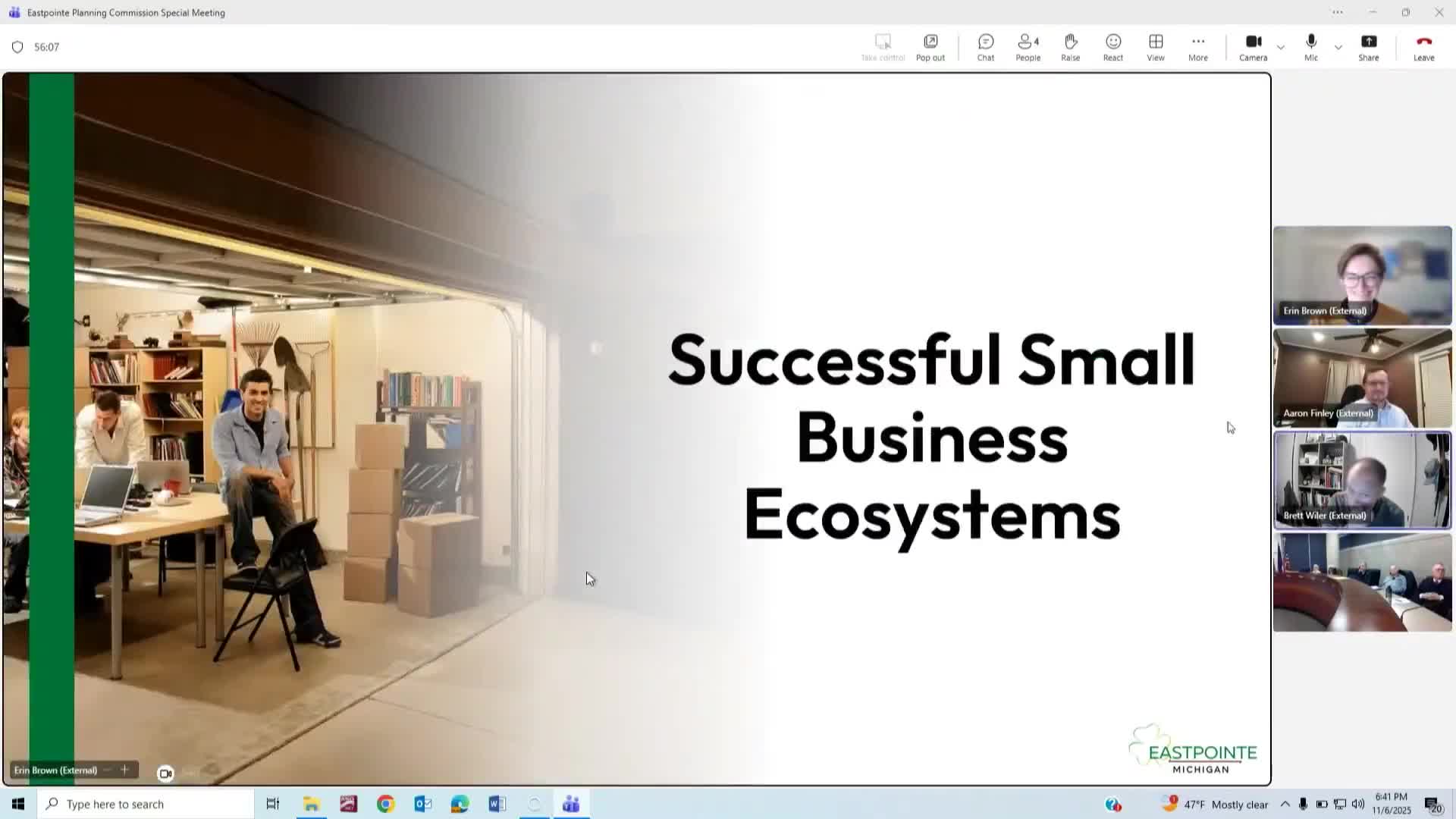30000 uncollateralized crypto loans issued via iris scans to expand financial access – AInvest

Report on Fintech Innovations Advancing Sustainable Development Goals
Executive Summary: Advancing Financial Inclusion through Technology
A recent initiative by fintech firm Divine Research demonstrates a significant application of decentralized finance (DeFi) and biometric technology to advance several United Nations Sustainable Development Goals (SDGs). By issuing over 30,000 uncollateralized crypto loans in underserved regions, the platform directly addresses key development challenges, including poverty, inequality, and lack of access to resilient infrastructure. This report analyzes the model’s contributions to the SDGs, its operational framework, and the associated risks within the evolving digital finance landscape.
Contribution to Sustainable Development Goals (SDGs)
The lending model makes direct and indirect contributions to multiple SDGs:
- SDG 1 (No Poverty) & SDG 10 (Reduced Inequalities): The platform provides critical access to capital for individuals historically excluded from the traditional financial system. By targeting loans primarily under $1,000 to demographics such as vendors, teachers, and gig workers, it offers a pathway to financial stability and reduces economic inequalities.
- SDG 8 (Decent Work and Economic Growth): Access to micro-loans empowers entrepreneurship and supports small-scale economic activities, fostering local economic growth and creating opportunities for decent work in marginalized communities.
- SDG 9 (Industry, Innovation, and Infrastructure): The model is built on innovative financial infrastructure that bypasses conventional banking. The integration of biometric identity verification (World ID) and blockchain technology represents a leap forward in building inclusive and resilient financial systems.
- SDG 16 (Peace, Justice, and Strong Institutions): The use of iris-scanning technology to create a unique digital identity minimizes identity fraud and strengthens institutional integrity within the lending process, promoting a transparent and accountable system.
Operational Framework and Technological Innovation
The platform’s success in penetrating underserved markets is based on a unique operational model that leverages cutting-edge technology to manage risk and deliver capital efficiently.
- Biometric Identity Verification: Borrowers are authenticated using World ID, an iris-scanning technology. This ensures each borrower is a unique individual, drastically reducing the risk of fraudulent applications and repeat defaults, which is a primary barrier in uncollateralized lending.
- Uncollateralized Lending Model: Loans are issued without requiring collateral, removing a significant obstacle for borrowers in low-income regions who lack traditional assets.
- Peer-to-Peer Capital Sourcing: Capital for the loans is sourced from individual users seeking high-yield returns, creating a decentralized, peer-to-peer ecosystem. This structure aligns with the principles of DeFi and diversifies funding away from traditional institutions.
- Risk Mitigation Strategy: Despite a high initial default rate of 40% on first-time loans, the platform mitigates losses through mechanisms such as issuing reclaimable Worldcoin tokens to borrowers, creating an incentive structure within its ecosystem.
Market Context and Systemic Challenges
While Divine Research’s approach is innovative, it operates within a complex and skeptical market still recovering from the high-profile failures of uncollateralized crypto lenders like Celsius and Genesis in 2022. The sector faces significant challenges that must be addressed to ensure long-term viability and contribution to sustainable development.
Key Challenges:
- Risk Management: Balancing high-risk, high-reward lending with robust risk management protocols is critical for sustainability. The high default rates, while absorbed, pose a long-term challenge to scalability.
- Regulatory Uncertainty: The DeFi lending space largely operates outside traditional regulatory frameworks. Achieving regulatory clarity is essential for protecting consumers and ensuring stable growth.
- Competition and Evolution: The uncollateralized lending niche is evolving, with other firms like 3Jane using AI for automation and Wildcat targeting institutional clients. Even traditional players like JPMorgan are exploring crypto-backed lending, indicating a competitive future.
The successful integration of biometric verification with DeFi presents a powerful model for expanding financial access. However, its ability to scale and achieve a lasting impact on the SDGs will depend on navigating these systemic risks and regulatory hurdles.
SDGs Addressed in the Article
The article highlights issues and innovations directly related to several Sustainable Development Goals, primarily focusing on financial inclusion, economic growth, and technological innovation.
-
SDG 1: No Poverty
The initiative by Divine Research to provide uncollateralized loans to individuals in underserved regions directly addresses the goal of eradicating poverty. By offering financial services to those who lack access to conventional credit, the platform provides a tool for economic empowerment, which is a critical step in poverty alleviation.
-
SDG 8: Decent Work and Economic Growth
The article connects to this goal by detailing how the loans support “vendors, teachers, and gig workers.” Access to credit enables these individuals to invest in their small businesses or manage income volatility, fostering entrepreneurship and contributing to local economic growth. The peer-to-peer lending model also creates high-yield opportunities for lenders, stimulating economic activity.
-
SDG 9: Industry, Innovation, and Infrastructure
This SDG is central to the article, which describes a fintech solution that leverages innovative technologies like cryptocurrency (USDC), biometric verification (World ID), and decentralized finance (DeFi). This represents the development of a new type of financial infrastructure that bypasses traditional banking systems to serve marginalized populations, showcasing innovation as a driver for inclusive industrialization.
-
SDG 10: Reduced Inequalities
The core mission of the platform is to reduce financial inequalities. The article explicitly states that the loans target “non-traditional demographics” and “marginalized populations” who have been “historically excluded” by traditional banks. By providing access to financial resources, the initiative aims to bridge the gap between the banked and the unbanked, promoting greater economic inclusion.
Specific SDG Targets Identified
Based on the article’s content, several specific SDG targets can be identified:
-
Target 1.4: Equal rights to economic resources and financial services
This target aims to ensure that the poor and vulnerable have access to financial services, including microfinance. The article directly addresses this by describing the issuance of over 30,000 small, uncollateralized loans (primarily under $1,000) to people in “underserved regions,” which is a form of microfinance designed to expand access to economic resources.
-
Target 8.10: Expand access to banking, insurance and financial services for all
The entire premise of Divine Research’s model is to “expand financial access” for those excluded from the traditional banking system. By creating a peer-to-peer lending platform that serves vendors and gig workers, it directly contributes to strengthening the capacity of financial systems (albeit non-traditional ones) to serve all segments of the population.
-
Target 9.3: Increase the access of small-scale enterprises to financial services
This target focuses on providing small-scale enterprises with access to affordable credit. The loans offered by Divine Research to “vendors” and “gig workers” are a clear example of providing financial services to support small-scale entrepreneurship and business activities.
-
Target 10.2: Empower and promote the social and economic inclusion of all
The article’s emphasis on serving “marginalized populations” who are “historically excluded” by traditional banks directly aligns with this target. The use of technology to bypass conventional barriers promotes the economic inclusion of these groups, irrespective of their economic status or lack of credit history.
Indicators for Measuring Progress
The article mentions or implies several quantitative and qualitative indicators that can be used to measure progress towards the identified targets:
-
Number of loans issued to underserved populations
The article provides a direct metric: “over 30,000 uncollateralized crypto loans” have been issued. This serves as a primary indicator for Target 1.4 and 8.10, measuring the scale of expanded financial access.
-
Value of loans
The mention that loans are “primarily under $1,000 in USDC” is an indicator of the microfinance nature of the service, relevant to Target 1.4. It quantifies the level of financial resources being distributed.
-
Demographics of borrowers
The article identifies borrowers as “vendors, teachers, and gig workers” from “underserved regions.” This qualitative data serves as an indicator for Target 9.3 and 10.2, confirming that the financial services are reaching the intended small-scale enterprises and marginalized groups.
-
Adoption of new technology for authentication
The use of “biometric verification through World ID” is an indicator of innovation under SDG 9. The number of users authenticated via this method could measure the adoption of new, inclusive infrastructure.
-
Default and interest rates
The article states a “40% default rate on first-time loans” and interest rates between “20% and 30%.” These are critical risk management indicators that measure the sustainability and affordability of the financial model, which is relevant to the long-term success of achieving the targets.
SDGs, Targets, and Indicators Analysis
| SDGs | Targets | Indicators |
|---|---|---|
| SDG 1: No Poverty | Target 1.4: By 2030, ensure that all men and women, in particular the poor and the vulnerable, have equal rights to economic resources, as well as access to… financial services, including microfinance. |
|
| SDG 8: Decent Work and Economic Growth | Target 8.10: Strengthen the capacity of domestic financial institutions to encourage and expand access to banking, insurance and financial services for all. |
|
| SDG 9: Industry, Innovation, and Infrastructure | Target 9.3: Increase the access of small-scale industrial and other enterprises… to financial services, including affordable credit. |
|
| SDG 10: Reduced Inequalities | Target 10.2: By 2030, empower and promote the social, economic and political inclusion of all, irrespective of… economic or other status. |
|
Source: ainvest.com

What is Your Reaction?
 Like
0
Like
0
 Dislike
0
Dislike
0
 Love
0
Love
0
 Funny
0
Funny
0
 Angry
0
Angry
0
 Sad
0
Sad
0
 Wow
0
Wow
0













































































